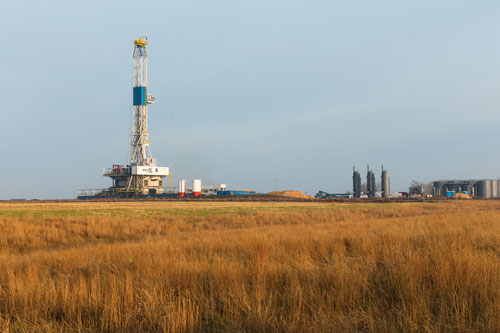EIA Projects U.S. Oil Output Surge from Top Shale Regions in March
(Reuters) — U.S. oil output from top shale-producing regions will rise in March to its highest in four months, the U.S. Energy Information Administration (EIA) said on Monday in its monthly Drilling Productivity Report.
Production from the top basins will rise by nearly 20,000 barrels per day (bpd) to 9.7 million bpd, its highest since December, the EIA said.
Oil output in the Permian basin, the largest U.S. shale field spread across West Texas and New Mexico, was due to rise by about 14,000 bpd to 6.1 million bpd, the second highest monthly output on record after November, the EIA said.
Production in the Eagle Ford in southeast Texas was due to rise to 1.1 million bpd, the highest since September, the EIA said. In the Bakken, output was set to rise to 1.2 million bpd, the highest since December.
Total natural gas output in the big shale basins will ease to a two-month low of 100.4 billion cubic feet per day (Bcf/d) in March from 100.5 Bcf/d in February, the EIA projected.
That compares with a monthly record gas output high of 101.4 Bcf/d in the big shale basins in November 2023.
In the biggest shale gas basin, Appalachia in Pennsylvania, Ohio and West Virginia, output is set to slide to a two-month low of 36.4 Bcf/d in March from 36.5 Bcf/d in February. Appalachia output hit a record 36.9 Bcf/d in December 2023.
The EIA expects new Appalachia gas well production per rig to rise to a 26-month high of 28.0 per million cubic feet per day (MMcf/d) in March.
If correct, that would be a 14th straight monthly increase in new well production per rig. New well production per rig in Appalachia peaked at 34.4 MMcf/d in December 2020.
The EIA said producers drilled just 850 oil and gas wells in January, the least since February 2022, and completed just 863, which was also the least since February 2022.
Total drilled-but-uncompleted (DUC) oil and gas wells slid by 13 to 4,386 in January, the lowest on record for a third month in a row, according to EIA data going back to December 2013.
Related News
Related News

- Enbridge Plans 86-Mile Pipeline Expansion, Bringing 850 Workers to Northern B.C.
- Intensity, Rainbow Energy to Build 344-Mile Gas Pipeline Across North Dakota
- U.S. Moves to Block Enterprise Products’ Exports to China Over Security Risk
- 208-Mile Mississippi-to-Alabama Gas Pipeline Moves Into FERC Review
- Court Ruling Allows MVP’s $500 Million Southgate Pipeline Extension to Proceed
- U.S. Pipeline Expansion to Add 99 Bcf/d, Mostly for LNG Export, Report Finds
- A Systematic Approach To Ensuring Pipeline Integrity
- LNG Canada Start-Up Fails to Lift Gas Prices Amid Supply Glut
- 275-Mile Texas-to-Oklahoma Gas Pipeline Enters Open Season
- TC Energy’s North Baja Pipeline Expansion Brings Mexico Closer to LNG Exports





Comments